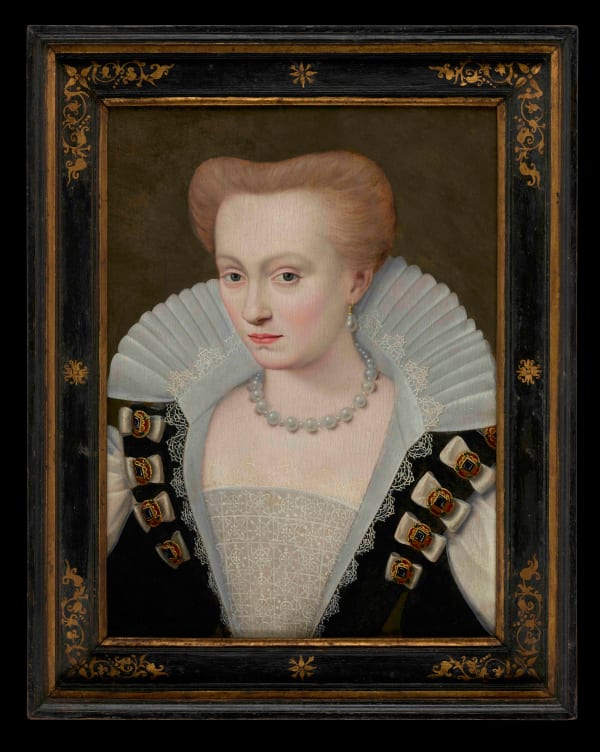-
 French school, circa 1580 - 1585Louise de Lorraine (1553 – 1601), Queen of France, 1580 - 1585Oil on panel14 ¼ x 10 ¼ in. (36 x 26 cm.)
French school, circa 1580 - 1585Louise de Lorraine (1553 – 1601), Queen of France, 1580 - 1585Oil on panel14 ¼ x 10 ¼ in. (36 x 26 cm.) -
![Franco-Flemish school, circa 1585 - 1590, Catherine de Clèves, Duchess of Guise (1548 - 1633) [?], circa 1585 - 1590](data:image/gif;base64,R0lGODlhAQABAIAAAAAAAP///yH5BAEAAAAALAAAAAABAAEAAAIBRAA7) Franco-Flemish school, circa 1585 - 1590Catherine de Clèves, Duchess of Guise (1548 - 1633) [?], circa 1585 - 1590Oil on panel7 ½ x 6 ¾ in. (19 x 17 cm.)
Franco-Flemish school, circa 1585 - 1590Catherine de Clèves, Duchess of Guise (1548 - 1633) [?], circa 1585 - 1590Oil on panel7 ½ x 6 ¾ in. (19 x 17 cm.) -
 Gillis Claeissens (1526 – 1605)Ferdinand de Bavière (1537 – c.1577)Oil on panel21 ¼ x 16 3/8 in. (53.8 x 41.5 cm.)
Gillis Claeissens (1526 – 1605)Ferdinand de Bavière (1537 – c.1577)Oil on panel21 ¼ x 16 3/8 in. (53.8 x 41.5 cm.)
About 16th Century portraiture
Portraits in the 16th century, more than ever before, played an important role in sealing the arrival of a new dynasty, and emphasising marital and political alliances. So deeply rooted was the respect for hereditary principle that portraiture was used as a tool to elevate the sitter into their dynastic setting.
English portrait painting was at the time deeply influenced by key continental artists, including Augsburg-born Holbein, whose paintings came to define the early Tudor period in England. Holbein came to England in 1526, and although he returned to Basel for a time, he was soon appointed as King's Painter to Henry VIII. His portraits today still possess a feeling of direct individuality to contemporary viewers, and the power to astonish. Artists working in his orbit were William Scrots, whose delicate portraits of Edward VI record a precarious moment in the Tudor lineage, and Hans Eworth, who defined a more sober likeness in Mary I.
During the reign of Elizabeth I, portraiture in England became arguably more stylised, exaggerated and iconographic, a reflection of the Queen's desire to control her own courtly image. This facilitated a blossoming of a particularly English aesthetic that obsessively reflected on surface, and the display of wealth through costume. It reached a brilliant climax during the second decade of the reign of James I, with artists such as William Larkin and Paul van Somer, before a resurgence of European naturalism.

![Franco-Flemish school, circa 1585 - 1590, Catherine de Clèves, Duchess of Guise (1548 - 1633) [?], circa 1585 - 1590](https://artlogic-res.cloudinary.com/w_600,c_limit,f_auto,fl_lossy,q_auto/artlogicstorage/weissgallery/images/view/8a49b60a7d36b1305be511659e44b04aj/theweissgallery-franco-flemish-school-circa-1585-1590-catherine-de-cl-ves-duchess-of-guise-1548-1633-circa-1585-1590.jpg)
